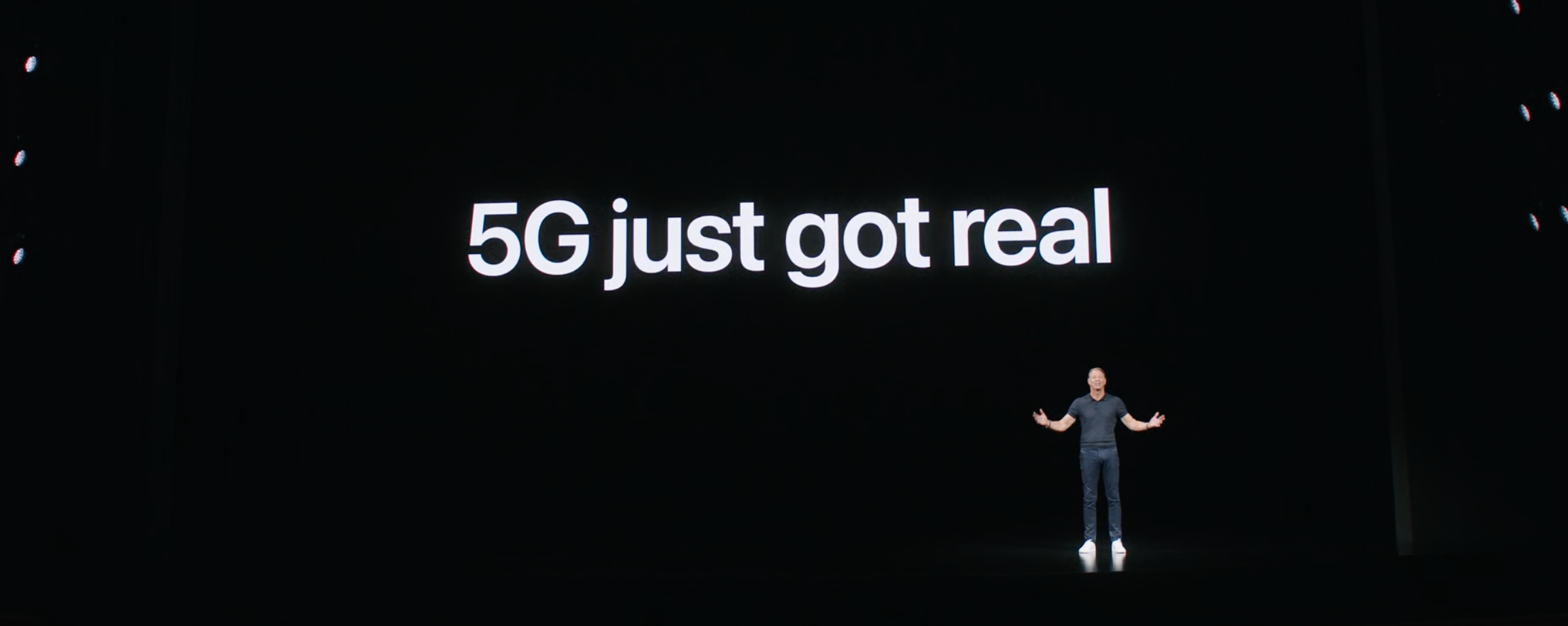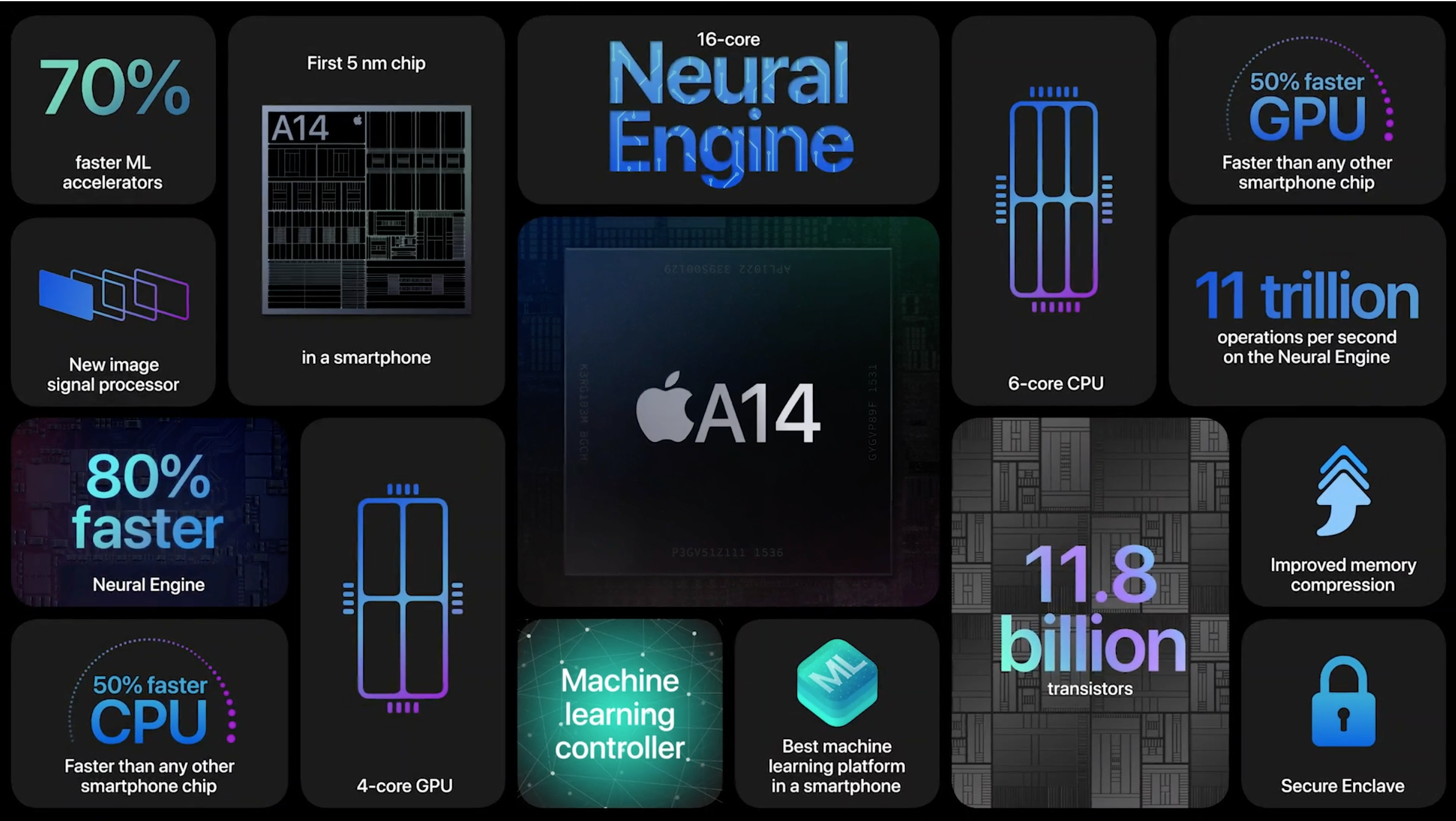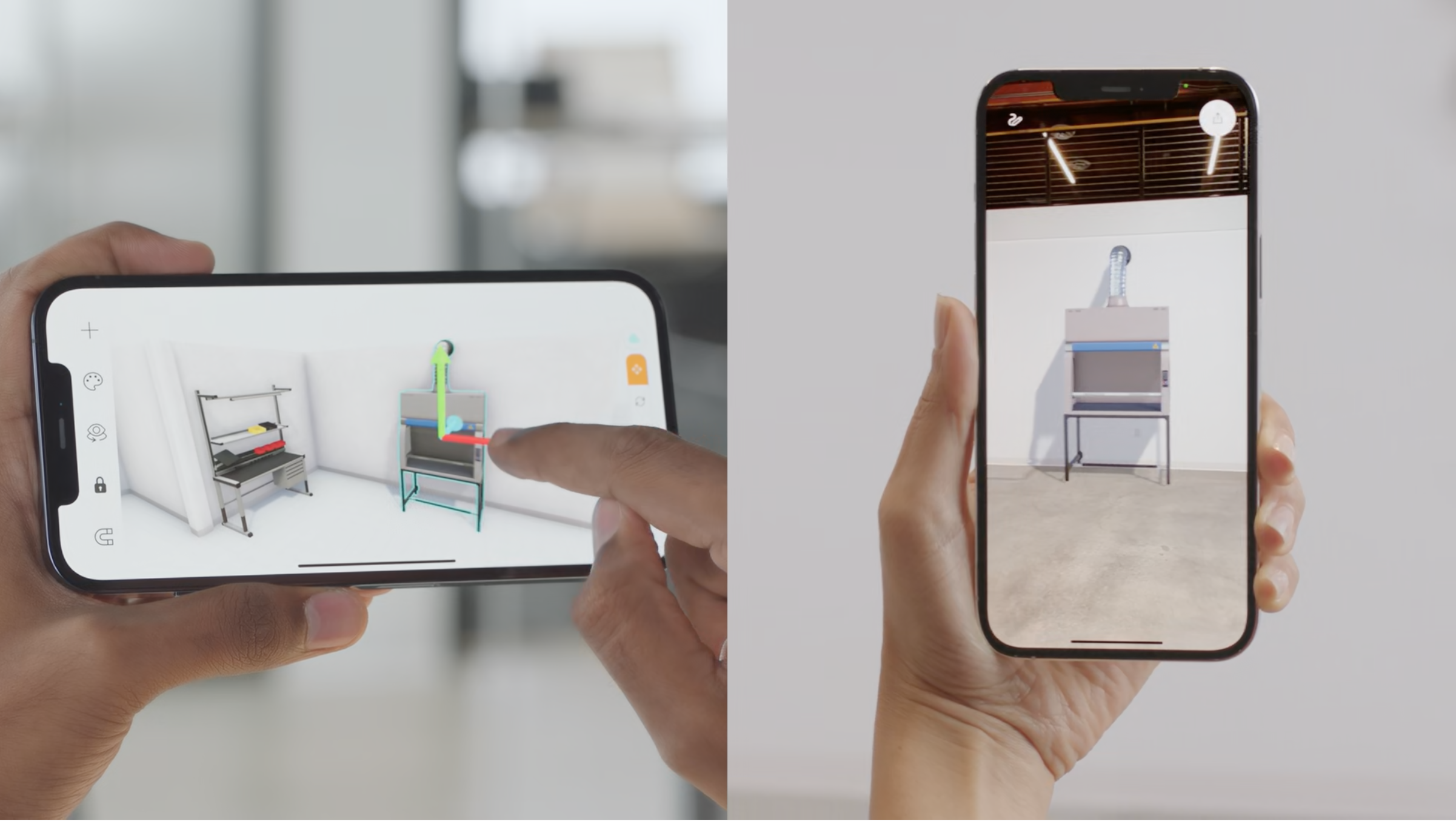“Hi, Speed”. There couldn’t have been a more glaring hint than the splash page for the special iPhone event held on October 13, 2020. As we suspected, Apple unveiled the first 5G iPhone. But it wasn’t just one phone. It was the entire iPhone 12 line up configured with what can only be the latest 5G modem and RF module from Qualcomm. If anything, this line up is a shot in the arm for 5G that has suffered a lackluster start, especially in the US, and growing doubt about its value to the average consumer. This is what operators around the globe have been waiting for, the 5G iPhone.
To quote the words of Hans Vestberg, CEO of Verizon, “5G just got real”. Since the introduction of the iPhone back in 2007 through its exclusive partnership with AT&T, the uptake of the next generation network really starts to take off the moment Apple decides it is time to get in the game. Many pundits claim that Apple is always late for this or that. It is more accurate to state that Apple gets in when it matters, no sooner, no later.
If you recall during the early days of 4G, device makers, most notably, HTC (remember them?) touted themselves as pioneers because they rolled out some of the first handsets that supported the new generation of mobile network. Never mind that coverage was almost nonexistent and service quality fell far short of promise.
In the end, being first didn’t matter. Today, HTC barely makes the headlines as their hopes of a revival through an over-hyped VR market dissipated as VR proved itself unready for prime time. Ultimately, Apple’s patience paid off and for the next decade, the company cemented itself as the dominant force in the ICT universe. With the iPhone comes the next generation network, not before.

A Line Up Geared Toward Accelerating 5G-Ready
It was surprising and refreshing to see that Apple has decided to go full blown 5G with its mid-tier iPhone 12 and premium iPhone 12 Pro models. This approach works well in favor of operators who have been jonesing for a 5G iPhone to drive excitement for their network rollouts. This line up supports the industry’s goal of getting as many tiers of 5G-enabled device to drive broad adoption of 5G services and to fulfill grand hopes of monetization.
Did Apple have to release a 5G iPhone this year? The answer is yes. With China already reaching approximately 110 million subscriptions as of September in less than a year according to the Chinese Ministry of Industrial and Information Technology, Apple needs to deliver a 5G iPhone in order to defend its posture in the premium segment of the all-important Chinese smartphone market. With Oppo, Vivo, Huawei and Xiaomi and the slew of other Chinese handset makers offering 5G handsets across all tiers, Apple really can’t afford to wait until next year regardless of the state of 5G network deployments in markets outside of China, South Korea and Japan.
I had thought Apple might tier the 5G band support with only the Pro models supporting mmWave. This approach seemed to make sense given that broader availability and service improvements would be realized through 5G services operating on mid band spectrum. mmWave-based services, or what Verizon calls “Ultra Wideband”, are still geographically sparse with few operators leading their 5G deployments in this frequency range. Today, most 5G handsets outside of the premium tier support Sub-6 bands and largely forgoing mmWave.
Surprisingly, all models of the iPhone 12 line support both the Sub-6 bands and mmWave. This will make the iPhone 12s future-proof from a connectivity perspective regardless of the model you buy. Next year, we should see most of the iPhone line up graduate to 5G. It will be interesting to see what Apple does with the iPhone SE and iPhone Xr. These two lower-end models could be the last LTE models in the long lineage of iPhones.
Back to Old School, iPhone 4 Style
I have always been a big fan of the iPhone 4 design. I consider it a classic with lasting appeal and relevance like the timeless Porsche 911 design motif. I’m sure some will argue otherwise as many of my industry and analyst colleagues already have. The iPhone 12 trades rounded sides with the angled ones. I supposed the iPad Pro’s move to this retro style back in 2018 was a herald of things to come.
If you remember the iPhone 4, you probably remember the infamous Antennaegate episode involving reception issues associated with the phones novel antennae design. Steve Jobs famously responded to gadget reviewers and complaining customers with a curt, “Don’t hold it that way.” We can only assume that Apple has learned its lesson and has taken care in engineering the 5G antennae to avoid a classic retro landmine. mmWave is a sensitive spectrum range. Not only does it have significant propagation and penetration limitations, hand placement on a 5G device can affect reception if the antennae system is not engineered well.
It is likely that Apple used a variation or modification of Qualcomm’s X60 modem and RF modules. I’m interested in a teardown of the iPhone 12s to see if Apple made any modifications to the antennae placement and module to avoid a 5G “Antennaegate” incident. In short, I’m a fan of the new design as long as it isn’t an unreasonable trade off between style and function. I’m not sure Tim Cook is so bold as to tell customers to hold their iPhone 12 differently if there is a 5G connectivity fiasco.
Going All-In With OLED
It was notable that the new iPhone line is going all OLED. This is an important harmonization of display technology at the leading edge of the iPhone portfolio versus what we saw last year with the iPhone 11s which came with LCD displays. While Samsung and Oppo offer OLED displays with a 120Hz display versus the iPhone 12’s 60Hz, Apple has made interesting decisions in the past not to overengineer certain aspects of their devices. Given that most mobile games and videos are rendered at 24, 30 or 60 frames per second (fps), there are very few games that support 120fps. Besides, 120fps is a massive battery life killer. Want 10 hours shaved off your battery life for a largely indiscernible improvement in “smoothness” in video playback or gaming? Not so tough of a choice unless you have an affinity for being tethered to power while you play.
While qualms about the iPhone’s comparatively lower PPI (pixels per inch), smaller screen sizes and notches have long been gripes of tech punditry, none of these considerations have mattered in diminishing the dominant value that the iPhone represents and is. By the way, your eye can only discern about 300 PPI at a normal distance of viewing of a smartphone. Steve Jobs knew what he was talking about when he first introduced the Retina Display.
A14: the 5nm Heterogenous Computing Beast
It was inevitable that Apple would be making the transition from Intel’s x86 platform to their own Apple Silicon for their Macs. With the announcement of the new A14 SoC that will power the iPhone 12 line up, Apple has introduced the first mobile processor manufactured using TSMC’s 5nm process. Apple engineers have squeezed 11.8 billion transistors into their A14 6-core CPU (a 40 percent increase) which they claim delivers a 50% performance improvement over the A13. They also expanded the number of cores in the A14 neural engine from eight to sixteen making the new device capable of 11 trillion operations per second.

Apple continues to push the envelope of heterogenous computing with their SoC designs. We can see machine learning (ML), graphics and image processing devices expand their footprint in the A Series chip designs delivering performance matching that of mid-range PCs while supporting a broad range of AI workloads characteristic of mobile computing. The A14 is just a taste of what Apple will deliver in Apple Silicon. We can only imaging the new personal computing architecture and silicon that will shape the future of the Mac and possibly PC computing for the foreseeable future.
Pushing Apple’s AR Advantage with LIDAR
While Apple has yet to release the mythical iGlass AR device, it is at the forefront of augmented reality (AR) having recently launched new hardware capabilities such as spatial audio as well as extensions to their software frameworks such as App Clips. A growing portfolio of functionality and services are laying the foundation for Apple to bring about meaningful augmented reality which has been so elusive since Google Glass trigger AR hopes back in 2013.
The addition of the LiDAR (Light Detection & Ranging) to the front facing cameras of the iPhone 12 line takes the iPhone’s AR capabilities to the next level. Introduced with this year’s iPad Pro, the LiDAR sensor uses multiple laser beams to sample the distance of objects and surroundings by measuring the reflections off of surfaces. These sensors can be used to create a detailed 3D image of a subject with high degrees of accuracy.

The Apple team showcased a very practical industrial application of the LiDAR camera array in measuring and characterizing what amounts to a digital twin of a physical space. Medtronic used an iPhone 12 to 3D scan and map a medical device production space to exact specifications. Production engineers then took the virtualized model of the space and placed to-scale digital twins of equipment to model and simulate their production flow designs. This capability could be very useful in creating 3D models and digital twins of brown field environments and the legacy equipment that populate them – an IoT solution architect’s fantasy.
iPhone Super Cycle – Does It Really Matter?
Over the last three years we have heard speculation of an 5G super cycle that will bring about a massive replacement of an aging installed base of iPhones. I highly doubt it even though Apple will be rolling the new iPhone line out to over 100 carriers around the world upon launch. Most consumers don’t know much about 5G and I would argue most don’t care. It is likely that this 5G iPhone will be just another cycle. That’s not a bad thing. Apple will probably do quite well despite the current pandemic-induced economic malaise affecting most economies.
The good new for operators is that with the introduction of the 5G-enabled iPhone 12, the next two years will bring about long-awaited expansion of 5G-ready subscribers who may eventually transition to 5G plans to help MNOs scale the cost efficiencies of their 5G network and operations once they get their 5G services and coverage up to snuff. While operators are hopeful for a boost in ARPU with the introduction of the 5G iPhone line, the jury is still out as getting subscribers to pay more for 5G services has been much more difficult than expected. Operators may be able to convince new 5G iPhone customers to port their plans over to more lucrative unlimited plans with “5G access included”, but it is likely 5G is just an expected service upgrade, not a premium upgrade.
Implications for Business Leaders
Sure, the 5G iPhone is here. While 5G may be just a bit more real, it still has a way to go. It is still early days for 5G for consumers and industries. Given that most of us are less mobile in our personal and work lives during these pandemic times, the benefits of 5G have been diluted as many of us continue to work from home and shelter in place relying more on wifi for our wireless connectivity. Regardless, Apple will need to jump into 5G as markets in Asia continue to move aggressively with their 5G deployments having fared much better than other regional markets, including the US and most of the EU, that are undergo second and third waves of the coronavirus pandemic.
The good news is that the weight of the Apple developer community will begin to push the envelope of application innovation on top of an impressive portfolio of hardware and the 5G network. Apple’s lead will have a broader impact across the mobile computing industry driving the non-Apple ecosystems to up their game as they hitch a ride on Apple’s 5G coattail. Remember, being first doesn’t mean you are leading or winning.
For more insights on neXt Curve’s 5G technology and end market research themes contact us for a detailed briefing with one of our analysts. Follow our site to get updates and notifications of our research and our 2020 research agenda.
Related Content & Media
- Tech Insight: Debunking 5G Myths & Hype
- Tech Insight: Apple Silicon
- Tech Insight: Qualcomm Ushers in the Year of Standalone 5G NR and 5nm with Snapdragon X60
- Industry Insight: Apple’s China Problem
- Tech Insight: Apple’s Not-So-Slow-Moving Coup of The Personal Computing World
- Market Insights: The Passing of The Torch – Apple Watch
- Market Insights: Apple WWDC 2018
- Market Insights: What Wall Street Does Not Understand About Apple
by Leonard Lee
Managing Director, neXt Curve
September 18, 2018
© 2018 neXt Curve. All rights reserved.